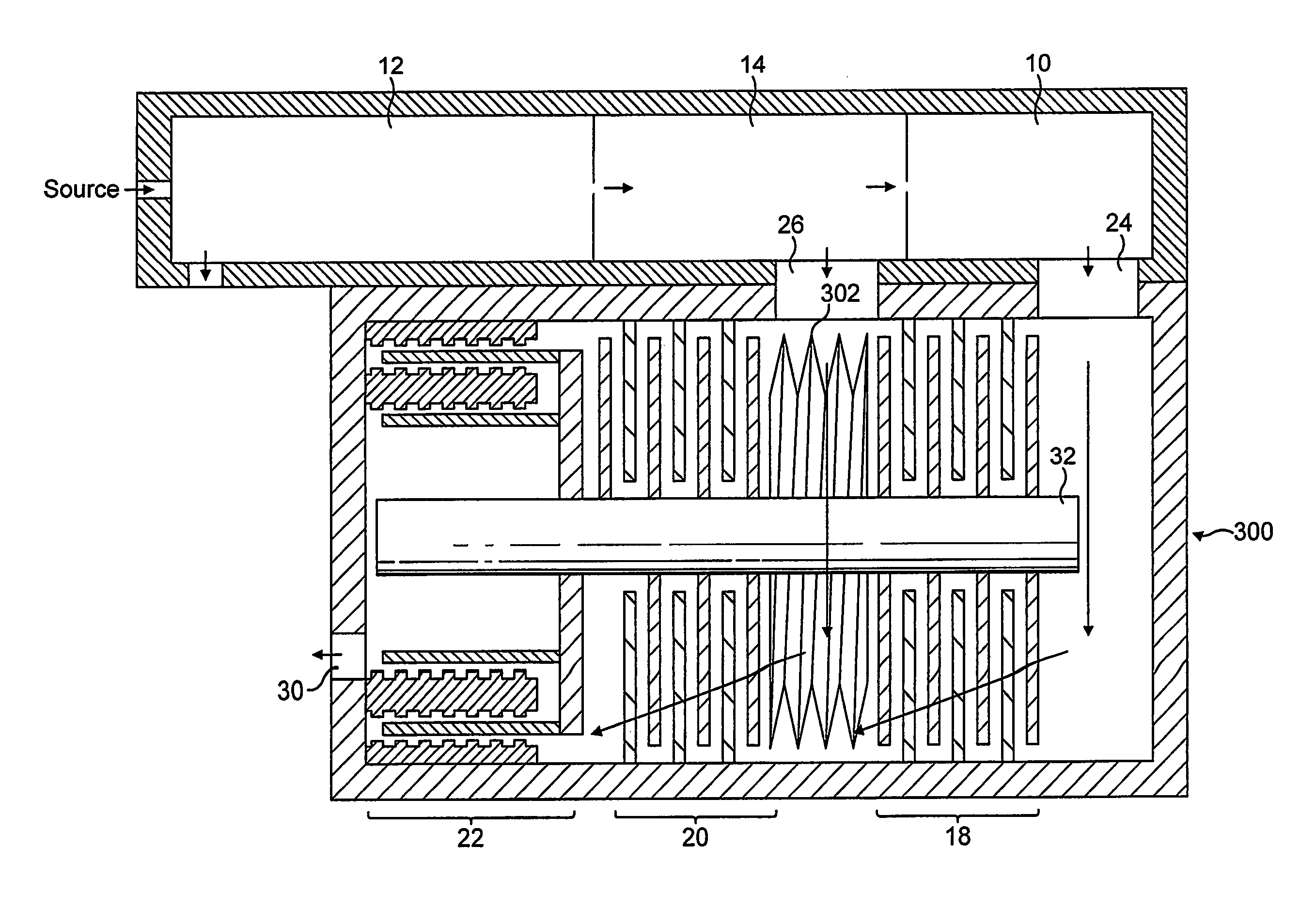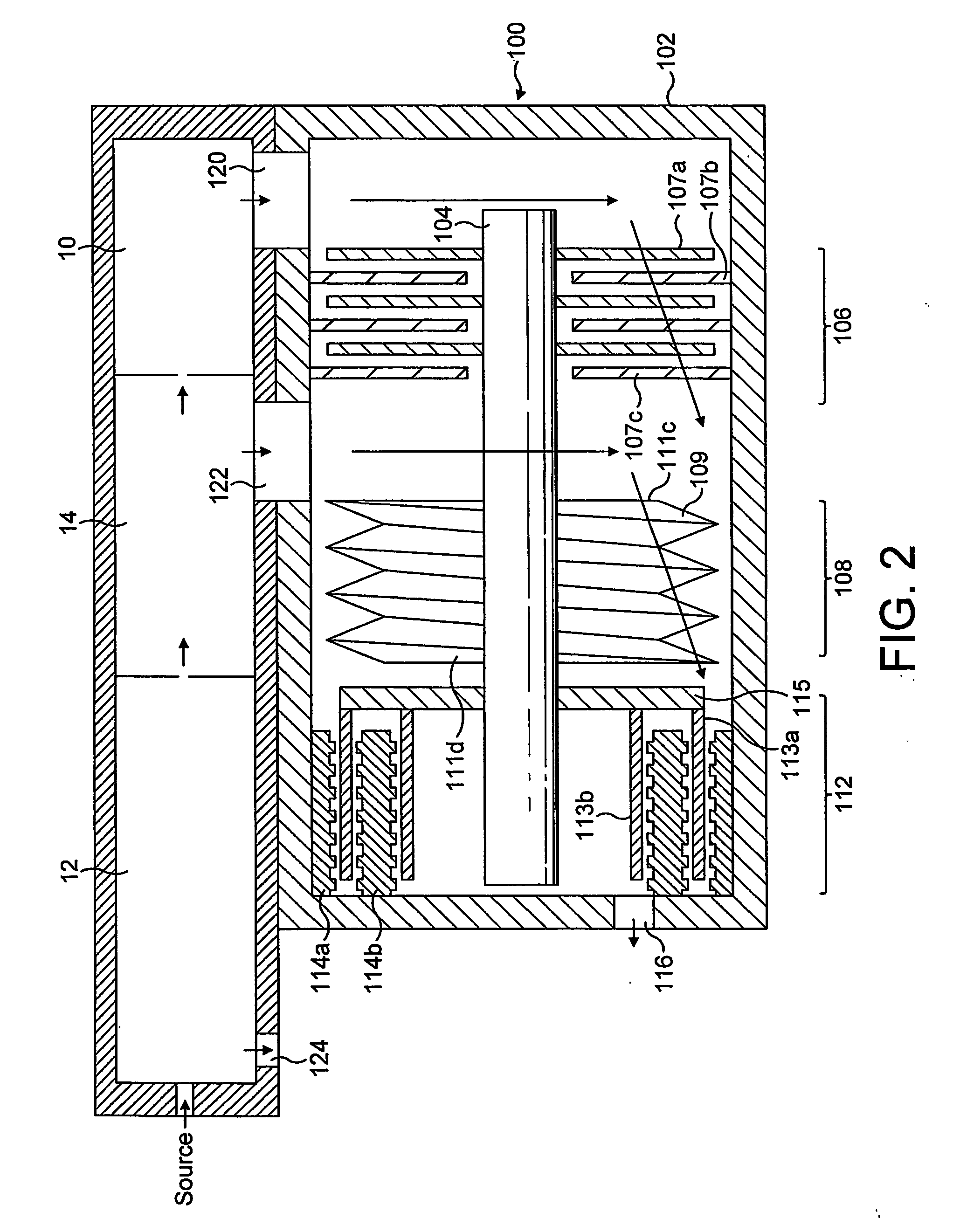Vacuum pump
a vacuum pump and pump body technology, applied in the field of vacuum pumps, can solve the problems of less efficient mechanism, reduce the number of radial interactions, and increase the depth of the radial blades
- Summary
- Abstract
- Description
- Claims
- Application Information
AI Technical Summary
Benefits of technology
Problems solved by technology
Method used
Image
Examples
Embodiment Construction
[0025]With reference to FIG. 2, a first embodiment of a vacuum pump 100 suitable for evacuating at the least the high vacuum chamber 10 and intermediate chamber 14 of the differentially pumped mass spectrometer system described above with reference to FIG. 1 comprises a multi-component body 102 within which is mounted a shaft 104. Rotation of the shaft is effected by a motor (not shown), for example, a brushless dc motor, positioned about the shaft 104. The shaft 104 is mounted on opposite bearings (not shown). For example, the drive shaft 104 may be supported by a hybrid permanent magnet bearing and oil lubricated bearing system.
[0026]The pump includes three pumping sections 106, 108 and 112. The first pumping section 106 comprises a set of turbo-molecular stages. In the embodiment shown in FIG. 2, the set of turbo-molecular stages 106 comprises three rotor blades and three stator blades of known angled construction. A rotor blade is indicated at 107a and a stator blade is indicate...
PUM
 Login to View More
Login to View More Abstract
Description
Claims
Application Information
 Login to View More
Login to View More - R&D
- Intellectual Property
- Life Sciences
- Materials
- Tech Scout
- Unparalleled Data Quality
- Higher Quality Content
- 60% Fewer Hallucinations
Browse by: Latest US Patents, China's latest patents, Technical Efficacy Thesaurus, Application Domain, Technology Topic, Popular Technical Reports.
© 2025 PatSnap. All rights reserved.Legal|Privacy policy|Modern Slavery Act Transparency Statement|Sitemap|About US| Contact US: help@patsnap.com



